Урок 1.
00:05:22
Course Outline
Урок 2.
00:04:39
What is deep learning?
Урок 3.
00:09:39
Why use deep learning?
Урок 4.
00:10:27
What are neural networks?
Урок 5.
00:08:37
What is deep learning already being used for?
Урок 6.
00:07:57
What is and why use TensorFlow?
Урок 7.
00:03:38
What is a Tensor?
Урок 8.
00:04:30
What we're going to cover throughout the course
Урок 9.
00:05:34
How to approach this course
Урок 10.
00:18:46
Creating your first tensors with TensorFlow and tf.constant()
Урок 11.
00:07:08
Creating tensors with TensorFlow and tf.Variable()
Урок 12.
00:09:41
Creating random tensors with TensorFlow
Урок 13.
00:09:41
Shuffling the order of tensors
Урок 14.
00:11:56
Creating tensors from NumPy arrays
Урок 15.
00:11:58
Getting information from your tensors (tensor attributes
Урок 16.
00:12:34
Indexing and expanding tensors
Урок 17.
00:05:35
Manipulating tensors with basic operations
Урок 18.
00:11:54
Matrix multiplication with tensors part 1
Урок 19.
00:13:30
Matrix multiplication with tensors part 2
Урок 20.
00:10:04
Matrix multiplication with tensors part 3
Урок 21.
00:06:56
Changing the datatype of tensors
Урок 22.
00:09:50
Tensor aggregation (finding the min, max, mean & more)
Урок 23.
00:06:14
Tensor troubleshooting example (updating tensor datatypes)
Урок 24.
00:09:32
Finding the positional minimum and maximum of a tensor (argmin and argmax) (9:31)
Урок 25.
00:03:00
Squeezing a tensor (removing all 1-dimension axes)
Урок 26.
00:05:47
One-hot encoding tensors
Урок 27.
00:04:48
Trying out more tensor math operations
Урок 28.
00:05:44
Exploring TensorFlow and NumPy's compatibility
Урок 29.
00:10:20
Making sure our tensor operations run really fast on GPUs
Урок 30.
00:07:34
Introduction to Neural Network Regression with TensorFlow
Урок 31.
00:09:00
Inputs and outputs of a neural network regression model
Урок 32.
00:07:56
Anatomy and architecture of a neural network regression model
Урок 33.
00:12:47
Creating sample regression data (so we can model it)
Урок 34.
00:20:16
The major steps in modelling with TensorFlow
Урок 35.
00:06:03
Steps in improving a model with TensorFlow part 1
Урок 36.
00:09:26
Steps in improving a model with TensorFlow part 2
Урок 37.
00:12:34
Steps in improving a model with TensorFlow part 3
Урок 38.
00:07:25
Evaluating a TensorFlow model part 1 ("visualise, visualise, visualise")
Урок 39.
00:11:02
Evaluating a TensorFlow model part 2 (the three datasets)
Урок 40.
00:17:19
Evaluating a TensorFlow model part 3 (getting a model summary)
Урок 41.
00:07:15
Evaluating a TensorFlow model part 4 (visualising a model's layers)
Урок 42.
00:09:17
Evaluating a TensorFlow model part 5 (visualising a model's predictions)
Урок 43.
00:08:06
Evaluating a TensorFlow model part 6 (common regression evaluation metrics)
Урок 44.
00:05:53
Evaluating a TensorFlow regression model part 7 (mean absolute error)
Урок 45.
00:03:19
Evaluating a TensorFlow regression model part 7 (mean square error)
Урок 46.
00:13:51
Setting up TensorFlow modelling experiments part 1 (start with a simple model)
Урок 47.
00:11:30
Setting up TensorFlow modelling experiments part 2 (increasing complexity)
Урок 48.
00:10:21
Comparing and tracking your TensorFlow modelling experiments
Урок 49.
00:08:20
How to save a TensorFlow model
Урок 50.
00:10:16
How to load and use a saved TensorFlow model
Урок 51.
00:06:19
(Optional) How to save and download files from Google Colab
Урок 52.
00:13:32
Putting together what we've learned part 1 (preparing a dataset)
Урок 53.
00:13:21
Putting together what we've learned part 2 (building a regression model)
Урок 54.
00:15:48
Putting together what we've learned part 3 (improving our regression model)
Урок 55.
00:09:35
Preprocessing data with feature scaling part 1 (what is feature scaling?)
Урок 56.
00:10:58
Preprocessing data with feature scaling part 2 (normalising our data)
Урок 57.
00:07:41
Preprocessing data with feature scaling part 3 (fitting a model on scaled data)
Урок 58.
00:08:26
Introduction to neural network classification in TensorFlow
Урок 59.
00:06:39
Example classification problems (and their inputs and outputs)
Урок 60.
00:06:22
Input and output tensors of classification problems
Урок 61.
00:09:37
Typical architecture of neural network classification models with TensorFlow
Урок 62.
00:11:35
Creating and viewing classification data to model
Урок 63.
00:04:39
Checking the input and output shapes of our classification data
Урок 64.
00:12:11
Building a not very good classification model with TensorFlow
Урок 65.
00:09:14
Trying to improve our not very good classification model
Урок 66.
00:15:09
Creating a function to view our model's not so good predictions
Урок 67.
00:12:19
Make our poor classification model work for a regression dataset
Урок 68.
00:09:39
Non-linearity part 1: Straight lines and non-straight lines
Урок 69.
00:05:48
Non-linearity part 2: Building our first neural network with non-linearity
Урок 70.
00:10:19
Non-linearity part 3: Upgrading our non-linear model with more layers
Урок 71.
00:08:38
Non-linearity part 4: Modelling our non-linear data once and for all
Урок 72.
00:14:27
Non-linearity part 5: Replicating non-linear activation functions from scratch
Урок 73.
00:14:48
Getting great results in less time by tweaking the learning rate
Урок 74.
00:06:12
Using the TensorFlow History object to plot a model's loss curves
Урок 75.
00:17:33
Using callbacks to find a model's ideal learning rate
Урок 76.
00:09:21
Training and evaluating a model with an ideal learning rate
Урок 77.
00:06:05
Introducing more classification evaluation methods
Урок 78.
00:04:18
Finding the accuracy of our classification model
Урок 79.
00:08:28
Creating our first confusion matrix (to see where our model is getting confused)
Урок 80.
00:14:01
Making our confusion matrix prettier
Урок 81.
00:10:38
Putting things together with multi-class classification part 1: Getting the data
Урок 82.
00:07:08
Multi-class classification part 2: Becoming one with the data
Урок 83.
00:15:39
Multi-class classification part 3: Building a multi-class classification model
Урок 84.
00:12:44
Multi-class classification part 4: Improving performance with normalisation
Урок 85.
00:04:14
Multi-class classification part 5: Comparing normalised and non-normalised data
Урок 86.
00:10:39
Multi-class classification part 6: Finding the ideal learning rate
Урок 87.
00:13:17
Multi-class classification part 7: Evaluating our model
Урок 88.
00:04:27
Multi-class classification part 8: Creating a confusion matrix
Урок 89.
00:10:43
Multi-class classification part 9: Visualising random model predictions
Урок 90.
00:15:34
What "patterns" is our model learning?
Урок 91.
00:09:37
Introduction to Computer Vision with TensorFlow
Урок 92.
00:08:00
Introduction to Convolutional Neural Networks (CNNs) with TensorFlow
Урок 93.
00:08:28
Downloading an image dataset for our first Food Vision model
Урок 94.
00:05:06
Becoming One With Data
Урок 95.
00:12:27
Becoming One With Data Part 2
Урок 96.
00:04:23
Becoming One With Data Part 3
Урок 97.
00:18:18
Building an end to end CNN Model
Урок 98.
00:09:18
Using a GPU to run our CNN model 5x faster
Урок 99.
00:08:52
Trying a non-CNN model on our image data
Урок 100.
00:09:53
Improving our non-CNN model by adding more layers
Урок 101.
00:09:04
Breaking our CNN model down part 1: Becoming one with the data
Урок 102.
00:11:47
Breaking our CNN model down part 2: Preparing to load our data
Урок 103.
00:09:55
Breaking our CNN model down part 3: Loading our data with ImageDataGenerator
Урок 104.
00:08:03
Breaking our CNN model down part 4: Building a baseline CNN model
Урок 105.
00:15:21
Breaking our CNN model down part 5: Looking inside a Conv2D layer
Урок 106.
00:07:15
Breaking our CNN model down part 6: Compiling and fitting our baseline CNN
Урок 107.
00:11:46
Breaking our CNN model down part 7: Evaluating our CNN's training curves
Урок 108.
00:13:41
Breaking our CNN model down part 8: Reducing overfitting with Max Pooling
Урок 109.
00:06:53
Breaking our CNN model down part 9: Reducing overfitting with data augmentation
Урок 110.
00:15:05
Breaking our CNN model down part 10: Visualizing our augmented data
Урок 111.
00:08:50
Breaking our CNN model down part 11: Training a CNN model on augmented data
Урок 112.
00:10:02
Breaking our CNN model down part 12: Discovering the power of shuffling data
Урок 113.
00:05:22
Breaking our CNN model down part 13: Exploring options to improve our model
Урок 114.
00:04:55
Downloading a custom image to make predictions on
Урок 115.
00:10:01
Writing a helper function to load and preprocessing custom images
Урок 116.
00:10:09
Making a prediction on a custom image with our trained CNN
Урок 117.
00:15:00
Multi-class CNN's part 1: Becoming one with the data
Урок 118.
00:06:39
Multi-class CNN's part 2: Preparing our data (turning it into tensors)
Урок 119.
00:07:25
Multi-class CNN's part 3: Building a multi-class CNN model
Урок 120.
00:06:03
Multi-class CNN's part 4: Fitting a multi-class CNN model to the data
Урок 121.
00:04:52
Multi-class CNN's part 5: Evaluating our multi-class CNN model (
Урок 122.
00:12:20
Multi-class CNN's part 6: Trying to fix overfitting by removing layers
Урок 123.
00:11:47
Multi-class CNN's part 7: Trying to fix overfitting with data augmentation
Урок 124.
00:04:24
Multi-class CNN's part 8: Things you could do to improve your CNN model
Урок 125.
00:09:23
Multi-class CNN's part 9: Making predictions with our model on custom images
Урок 126.
00:06:22
Saving and loading our trained CNN model
Урок 127.
00:10:13
What is and why use transfer learning?
Урок 128.
00:14:40
Downloading and preparing data for our first transfer learning model
Урок 129.
00:10:02
Introducing Callbacks in TensorFlow and making a callback to track our models
Урок 130.
00:09:52
Exploring the TensorFlow Hub website for pretrained models
Урок 131.
00:14:01
Building and compiling a TensorFlow Hub feature extraction model
Урок 132.
00:09:14
Blowing our previous models out of the water with transfer learning
Урок 133.
00:07:36
Plotting the loss curves of our ResNet feature extraction model
Урок 134.
00:09:43
Building and training a pre-trained EfficientNet model on our data
Урок 135.
00:11:41
Different Types of Transfer Learning
Урок 136.
00:15:17
Comparing Our Model's Results
Урок 137.
00:06:17
Introduction to Transfer Learning in TensorFlow Part 2: Fine-tuning
Урок 138.
00:07:36
Importing a script full of helper functions (and saving lots of space)
Урок 139.
00:15:39
Downloading and turning our images into a TensorFlow BatchDataset
Урок 140.
00:02:16
Discussing the four (actually five) modelling experiments we're running
Урок 141.
00:02:35
Comparing the TensorFlow Keras Sequential API versus the Functional API
Урок 142.
00:11:39
Creating our first model with the TensorFlow Keras Functional API
Урок 143.
00:10:54
Compiling and fitting our first Functional API model
Урок 144.
00:13:40
Getting a feature vector from our trained model
Урок 145.
00:03:44
Drilling into the concept of a feature vector (a learned representation)
Урок 146.
00:09:52
Downloading and preparing the data for Model 1 (1 percent of training data)
Урок 147.
00:12:07
Building a data augmentation layer to use inside our model
Урок 148.
00:10:56
Visualising what happens when images pass through our data augmentation layer
Урок 149.
00:15:56
Building Model 1 (with a data augmentation layer and 1% of training data)
Урок 150.
00:16:38
Building Model 2 (with a data augmentation layer and 10% of training data)
Урок 151.
00:07:26
Creating a ModelCheckpoint to save our model's weights during training
Урок 152.
00:07:15
Fitting and evaluating Model 2 (and saving its weights using ModelCheckpoint)
Урок 153.
00:07:18
Loading and comparing saved weights to our existing trained Model 2
Урок 154.
00:20:27
Preparing Model 3 (our first fine-tuned model)
Урок 155.
00:07:46
Fitting and evaluating Model 3 (our first fine-tuned model)
Урок 156.
00:10:27
Comparing our model's results before and after fine-tuning
Урок 157.
00:06:25
Downloading and preparing data for our biggest experiment yet (Model 4)
Урок 158.
00:12:01
Preparing our final modelling experiment (Model 4)
Урок 159.
00:10:20
Fine-tuning Model 4 on 100% of the training data and evaluating its results
Урок 160.
00:10:47
Comparing our modelling experiment results in TensorBoard
Урок 161.
00:02:05
How to view and delete previous TensorBoard experiments
Урок 162.
00:06:20
Introduction to Transfer Learning Part 3: Scaling Up
Урок 163.
00:13:35
Getting helper functions ready and downloading data to model
Урок 164.
00:05:39
Outlining the model we're going to build and building a ModelCheckpoint callback
Урок 165.
00:04:40
Creating a data augmentation layer to use with our model
Урок 166.
00:08:59
Creating a headless EfficientNetB0 model with data augmentation built in
Урок 167.
00:07:57
Fitting and evaluating our biggest transfer learning model yet
Урок 168.
00:11:29
Unfreezing some layers in our base model to prepare for fine-tuning
Урок 169.
00:08:24
Fine-tuning our feature extraction model and evaluating its performance
Урок 170.
00:06:26
Saving and loading our trained model
Урок 171.
00:06:35
Downloading a pretrained model to make and evaluate predictions with
Урок 172.
00:12:47
Making predictions with our trained model on 25,250 test samples
Урок 173.
00:06:06
Unravelling our test dataset for comparing ground truth labels to predictions
Урок 174.
00:05:18
Confirming our model's predictions are in the same order as the test labels
Урок 175.
00:12:08
Creating a confusion matrix for our model's 101 different classes
Урок 176.
00:14:17
Evaluating every individual class in our dataset
Урок 177.
00:07:37
Plotting our model's F1-scores for each separate class
Урок 178.
00:12:09
Creating a function to load and prepare images for making predictions
Урок 179.
00:16:07
Making predictions on our test images and evaluating them
Урок 180.
00:06:10
Discussing the benefits of finding your model's most wrong predictions
Урок 181.
00:11:17
Writing code to uncover our model's most wrong predictions
Урок 182.
00:10:37
Plotting and visualizing the samples our model got most wrong
Урок 183.
00:09:50
Making predictions on and plotting our own custom images
Урок 184.
00:05:45
Introduction to Milestone Project 1: Food Vision Big™
Урок 185.
00:10:18
Making sure we have access to the right GPU for mixed precision training
Урок 186.
00:03:07
Getting helper functions ready
Урок 187.
00:12:04
Introduction to TensorFlow Datasets (TFDS)
Урок 188.
00:15:57
Exploring and becoming one with the data (Food101 from TensorFlow Datasets)
Урок 189.
00:15:51
Creating a preprocessing function to prepare our data for modelling
Урок 190.
00:13:48
Batching and preparing our datasets (to make them run fast)
Урок 191.
00:06:50
Exploring what happens when we batch and prefetch our data
Урок 192.
00:07:15
Creating modelling callbacks for our feature extraction model
Урок 193.
00:10:06
Turning on mixed precision training with TensorFlow
Урок 194.
00:12:43
Creating a feature extraction model capable of using mixed precision training
Урок 195.
00:07:57
Checking to see if our model is using mixed precision training layer by layer
Урок 196.
00:10:20
Training and evaluating a feature extraction model (Food Vision Big™)
Урок 197.
00:07:48
Introducing your Milestone Project 1 challenge: build a model to beat DeepFood
Урок 198.
00:12:52
Introduction to Natural Language Processing (NLP) and Sequence Problems
Урок 199.
00:07:23
Example NLP inputs and outputs
Урок 200.
00:09:04
The typical architecture of a Recurrent Neural Network (RNN)
Урок 201.
00:08:53
Preparing a notebook for our first NLP with TensorFlow project
Урок 202.
00:16:42
Becoming one with the data and visualizing a text dataset
Урок 203.
00:06:27
Splitting data into training and validation sets
Урок 204.
00:09:23
Converting text data to numbers using tokenisation and embeddings (overview)
Урок 205.
00:17:11
Setting up a TensorFlow TextVectorization layer to convert text to numbers
Урок 206.
00:11:03
Mapping the TextVectorization layer to text data and turning it into numbers
Урок 207.
00:12:28
Creating an Embedding layer to turn tokenised text into embedding vectors
Урок 208.
00:08:58
Discussing the various modelling experiments we're going to run
Урок 209.
00:09:26
Model 0: Building a baseline model to try and improve upon
Урок 210.
00:12:15
Creating a function to track and evaluate our model's results
Урок 211.
00:20:52
Model 1: Building, fitting and evaluating our first deep model on text data
Урок 212.
00:20:44
Visualizing our model's learned word embeddings with TensorFlow's projector tool
Урок 213.
00:09:35
High-level overview of Recurrent Neural Networks (RNNs) + where to learn more
Урок 214.
00:18:17
Model 2: Building, fitting and evaluating our first TensorFlow RNN model (LSTM)
Урок 215.
00:16:57
Model 3: Building, fitting and evaluating a GRU-cell powered RNN
Урок 216.
00:19:35
Model 4: Building, fitting and evaluating a bidirectional RNN model
Урок 217.
00:19:32
Discussing the intuition behind Conv1D neural networks for text and sequences
Урок 218.
00:09:58
Model 5: Building, fitting and evaluating a 1D CNN for text
Урок 219.
00:13:46
Using TensorFlow Hub for pretrained word embeddings (transfer learning for NLP)
Урок 220.
00:10:46
Model 6: Building, training and evaluating a transfer learning model for NLP
Урок 221.
00:10:53
Preparing subsets of data for model 7 (same as model 6 but 10% of data)
Урок 222.
00:10:05
Model 7: Building, training and evaluating a transfer learning model on 10% data
Урок 223.
00:13:43
Fixing our data leakage issue with model 7 and retraining it
Урок 224.
00:13:15
Comparing all our modelling experiments evaluation metrics
Урок 225.
00:11:15
Uploading our model's training logs to TensorBoard and comparing them
Урок 226.
00:10:26
Saving and loading in a trained NLP model with TensorFlow
Урок 227.
00:13:25
Downloading a pretrained model and preparing data to investigate predictions
Урок 228.
00:08:29
Visualizing our model's most wrong predictions
Урок 229.
00:08:28
Making and visualizing predictions on the test dataset
Урок 230.
00:15:02
Understanding the concept of the speed/score tradeoff
Урок 231.
00:14:21
Introduction to Milestone Project 2: SkimLit
Урок 232.
00:07:23
What we're going to cover in Milestone Project 2 (NLP for medical abstracts)
Урок 233.
00:11:03
SkimLit inputs and outputs
Урок 234.
00:14:59
Setting up our notebook for Milestone Project 2 (getting the data)
Урок 235.
00:13:19
Visualizing examples from the dataset (becoming one with the data)
Урок 236.
00:19:51
Writing a preprocessing function to structure our data for modelling
Урок 237.
00:07:56
Performing visual data analysis on our preprocessed text
Урок 238.
00:13:16
Turning our target labels into numbers (ML models require numbers)
Урок 239.
00:09:26
Model 0: Creating, fitting and evaluating a baseline model for SkimLit
Урок 240.
00:09:56
Preparing our data for deep sequence models
Урок 241.
00:14:08
Creating a text vectoriser to map our tokens (text) to numbers
Урок 242.
00:09:15
Creating a custom token embedding layer with TensorFlow
Урок 243.
00:09:50
Creating fast loading dataset with the TensorFlow tf.data API
Урок 244.
00:17:22
Model 1: Building, fitting and evaluating a Conv1D with token embeddings
Урок 245.
00:10:54
Preparing a pretrained embedding layer from TensorFlow Hub for Model 2
Урок 246.
00:11:31
Model 2: Building, fitting and evaluating a Conv1D model with token embeddings
Урок 247.
00:23:25
Creating a character-level tokeniser with TensorFlow's TextVectorization layer
Урок 248.
00:07:45
Creating a character-level embedding layer with tf.keras.layers.Embedding
Урок 249.
00:13:46
Model 3: Building, fitting and evaluating a Conv1D model on character embeddings
Урок 250.
00:06:05
Discussing how we're going to build Model 4 (character + token embeddings)
Урок 251.
00:15:37
Model 4: Building a multi-input model (hybrid token + character embeddings)
Урок 252.
00:07:33
Model 4: Plotting and visually exploring different data inputs
Урок 253.
00:08:42
Crafting multi-input fast loading tf.data datasets for Model 4
Урок 254.
00:13:19
Model 4: Building, fitting and evaluating a hybrid embedding model
Урок 255.
00:07:19
Model 5: Adding positional embeddings via feature engineering (overview)
Урок 256.
00:12:26
Encoding the line number feature to used with Model 5
Урок 257.
00:07:57
Encoding the total lines feature to be used with Model 5
Урок 258.
00:09:20
Model 5: Building the foundations of a tribrid embedding model
Урок 259.
00:14:09
Model 5: Completing the build of a tribrid embedding model for sequences
Урок 260.
00:10:26
Visually inspecting the architecture of our tribrid embedding model
Урок 261.
00:09:01
Creating multi-level data input pipelines for Model 5 with the tf.data API
Урок 262.
00:10:36
Bringing SkimLit to life!!! (fitting and evaluating Model 5)
Урок 263.
00:09:37
Comparing the performance of all of our modelling experiments
Урок 264.
00:07:49
Saving, loading & testing our best performing model
Урок 265.
00:12:34
Congratulations and your challenge before heading to the next module
Урок 266.
00:03:54
Introduction to Milestone Project 3 (BitPredict) & where you can get help
Урок 267.
00:07:47
What is a time series problem and example forecasting problems at Uber
Урок 268.
00:04:53
Example forecasting problems in daily life
Урок 269.
00:07:58
What can be forecast?
Урок 270.
00:02:36
What we're going to cover (broadly)
Урок 271.
00:08:56
Time series forecasting inputs and outputs
Урок 272.
00:14:59
Downloading and inspecting our Bitcoin historical dataset
Урок 273.
00:07:40
Different kinds of time series patterns & different amounts of feature variables
Урок 274.
00:04:53
Visualizing our Bitcoin historical data with pandas
Урок 275.
00:10:59
Reading in our Bitcoin data with Python's CSV module
Урок 276.
00:08:38
Creating train and test splits for time series (the wrong way)
Урок 277.
00:07:13
Creating train and test splits for time series (the right way)
Урок 278.
00:07:58
Creating a plotting function to visualize our time series data
Урок 279.
00:09:12
Discussing the various modelling experiments were going to be running
Урок 280.
00:12:17
Model 0: Making and visualizing a naive forecast model
Урок 281.
00:11:12
Discussing some of the most common time series evaluation metrics
Урок 282.
00:09:39
Implementing MASE with TensorFlow
Урок 283.
00:10:12
Creating a function to evaluate our model's forecasts with various metrics
Урок 284.
00:05:07
Discussing other non-TensorFlow kinds of time series forecasting models
Урок 285.
00:13:02
Formatting data Part 2: Creating a function to label our windowed time series
Урок 286.
00:07:51
Discussing the use of windows and horizons in time series data
Урок 287.
00:23:36
Writing a preprocessing function to turn time series data into windows & labels
Урок 288.
00:10:02
Turning our windowed time series data into training and test sets
Урок 289.
00:07:26
Creating a modelling checkpoint callback to save our best performing model
Урок 290.
00:16:59
Model 1: Building, compiling and fitting a deep learning model on Bitcoin data
Урок 291.
00:14:04
Creating a function to make predictions with our trained models
Урок 292.
00:17:44
Model 2: Building, fitting and evaluating a deep model with a larger window size-27
Урок 293.
00:13:16
Model 3: Building, fitting and evaluating a model with a larger horizon size
Урок 294.
00:08:35
Adjusting the evaluation function to work for predictions with larger horizons
Урок 295.
00:08:45
Model 3: Visualizing the results
Урок 296.
00:09:45
Comparing our modelling experiments so far and discussing autocorrelation
Урок 297.
00:13:22
Preparing data for building a Conv1D model
Урок 298.
00:14:52
Model 4: Building, fitting and evaluating a Conv1D model on our Bitcoin data
Урок 299.
00:16:06
Model 5: Building, fitting and evaluating a LSTM (RNN) model on our Bitcoin data
Урок 300.
00:13:53
Investigating how to turn our univariate time series into multivariate
Урок 301.
00:12:13
Creating and plotting a multivariate time series with BTC price and block reward
Урок 302.
00:13:38
Preparing our multivariate time series for a model
Урок 303.
00:09:26
Model 6: Building, fitting and evaluating a multivariate time series model
Урок 304.
00:09:40
Model 7: Discussing what we're going to be doing with the N-BEATS algorithm
Урок 305.
00:18:39
Model 7: Replicating the N-BEATS basic block with TensorFlow layer subclassing
Урок 306.
00:15:03
Model 7: Testing our N-BEATS block implementation with dummy data inputs
Урок 307.
00:08:51
Model 7: Setting up hyperparameters for the N-BEATS algorithm
Урок 308.
00:12:56
Model 7: Getting ready for residual connections
Урок 309.
00:10:06
Model 7: Outlining the steps we're going to take to build the N-BEATS model
Урок 310.
00:22:23
Model 7: Putting together the pieces of the puzzle of the N-BEATS model
Урок 311.
00:06:47
Model 7: Plotting the N-BEATS algorithm we've created and admiring its beauty
Урок 312.
00:04:44
Model 8: Ensemble model overview
Урок 313.
00:20:05
Model 8: Building, compiling and fitting an ensemble of models
Урок 314.
00:16:10
Model 8: Making and evaluating predictions with our ensemble model
Урок 315.
00:12:57
Discussing the importance of prediction intervals in forecasting
Урок 316.
00:07:58
Getting the upper and lower bounds of our prediction intervals
Урок 317.
00:13:03
Plotting the prediction intervals of our ensemble model predictions
Урок 318.
00:13:42
(Optional) Discussing the types of uncertainty in machine learning
Урок 319.
00:08:25
Model 9: Preparing data to create a model capable of predicting into the future
Урок 320.
00:05:02
Model 9: Building, compiling and fitting a future predictions model
Урок 321.
00:08:31
Model 9: Discussing what's required for our model to make future predictions
Урок 322.
00:12:09
Model 9: Creating a function to make forecasts into the future
Урок 323.
00:13:10
Model 9: Plotting our model's future forecasts
Урок 324.
00:14:16
Model 10: Introducing the turkey problem and making data for it
Урок 325.
00:13:39
Model 10: Building a model to predict on turkey data (why forecasting is BS)
Урок 326.
00:13:00
Comparing the results of all of our models and discussing where to go next
Урок 327.
00:05:29
What is the TensorFlow Developer Certification?
Урок 328.
00:06:58
Why the TensorFlow Developer Certification?
Урок 329.
00:08:15
How to prepare (your brain) for the TensorFlow Developer Certification
Урок 330.
00:12:44
How to prepare (your computer) for the TensorFlow Developer Certification
Урок 331.
00:02:14
What to do after the TensorFlow Developer Certification exam
Урок 332.
00:04:52
What is Machine Learning?
Урок 333.
00:06:53
AI/Machine Learning/Data Science
Урок 334.
00:06:17
Exercise: Machine Learning Playground
Урок 335.
00:06:04
How Did We Get Here?
Урок 336.
00:04:25
Exercise: YouTube Recommendation Engine
Урок 337.
00:04:42
Types of Machine Learning
Урок 338.
00:04:45
What Is Machine Learning? Round 2
Урок 339.
00:01:49
Section Review
Урок 340.
00:02:39
Section Overview
Урок 341.
00:03:09
Introducing Our Framework
Урок 342.
00:05:00
6 Step Machine Learning Framework
Урок 343.
00:10:33
Types of Machine Learning Problems
Урок 344.
00:04:51
Types of Data
Урок 345.
00:03:32
Types of Evaluation
Урок 346.
00:05:59
Features In Data
Урок 347.
00:05:23
Modelling - Splitting Data
Урок 348.
00:04:36
Modelling - Picking the Model
Урок 349.
00:03:18
Modelling - Tuning
Урок 350.
00:03:36
Modelling - Comparison
Урок 351.
00:09:33
Experimentation
Урок 352.
00:04:01
Tools We Will Use
Урок 353.
00:02:28
Section Overview
Урок 354.
00:04:30
Pandas Introduction
Урок 355.
00:13:22
Series, Data Frames and CSVs
Урок 356.
00:09:49
Describing Data with Pandas
Урок 357.
00:11:09
Selecting and Viewing Data with Pandas
Урок 358.
00:13:07
Selecting and Viewing Data with Pandas Part 2
Урок 359.
00:13:57
Manipulating Data
Урок 360.
00:09:57
Manipulating Data 2
Урок 361.
00:10:13
Manipulating Data 3
Урок 362.
00:02:41
How To Download The Course Assignments
Урок 363.
00:07:44
Section Overview
Урок 364.
00:05:18
NumPy Introduction
Урок 365.
00:14:06
NumPy DataTypes and Attributes
Урок 366.
00:09:23
Creating NumPy Arrays
Урок 367.
00:07:18
NumPy Random Seed
Урок 368.
00:09:36
Viewing Arrays and Matrices
Урок 369.
00:11:32
Manipulating Arrays
Урок 370.
00:09:45
Manipulating Arrays 2
Урок 371.
00:07:11
Standard Deviation and Variance
Урок 372.
00:07:27
Reshape and Transpose
Урок 373.
00:11:46
Dot Product vs Element Wise
Урок 374.
00:03:34
Exercise: Nut Butter Store Sales
Урок 375.
00:13:05
Comparison Operators
Урок 376.
00:06:20
Sorting Arrays
Урок 377.
00:07:38
Turn Images Into NumPy Arrays































































































































































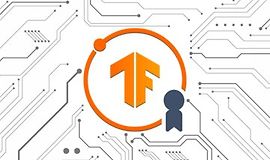
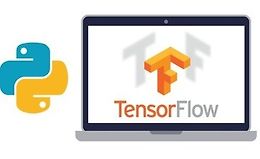
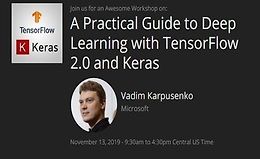
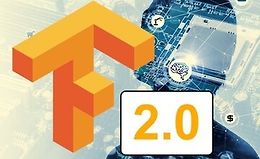
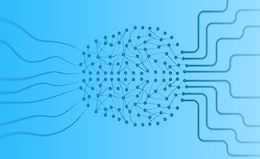
Адмін, онови, будь ласка
https://github.com/mrdbourke/tensorflow-deep-learning